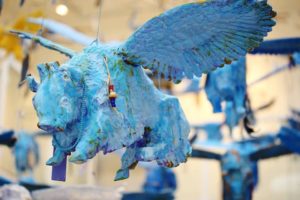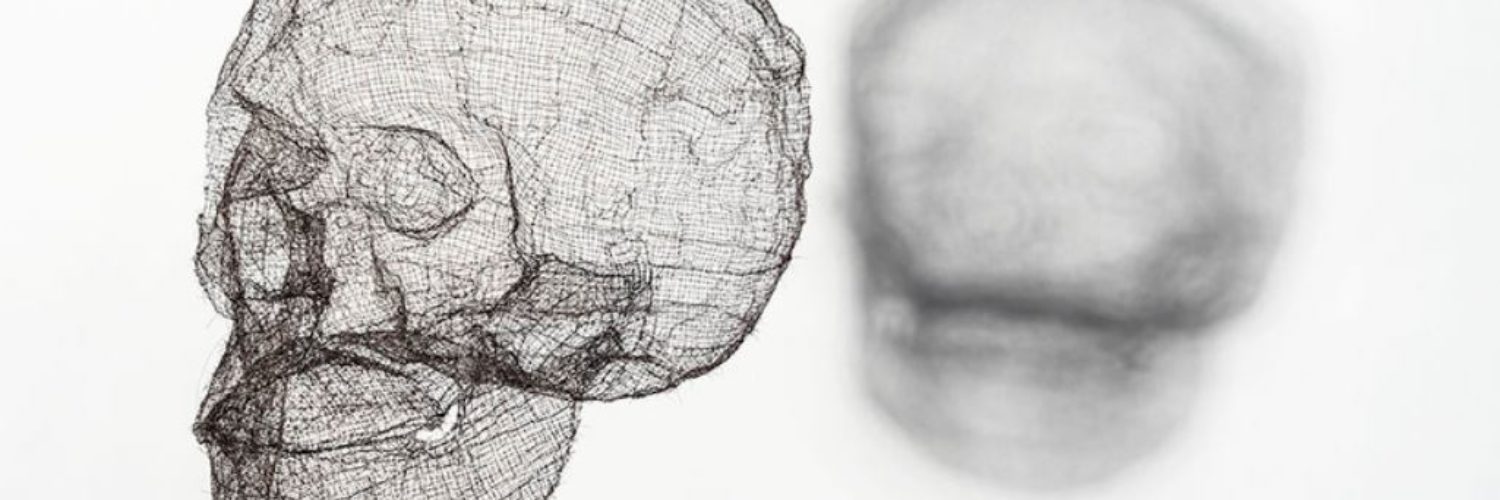Showing Up: form & concept with Director Frank Rose
Reading time: 6 minutes
Frank Rose is the director of form & concept, a contemporary art gallery at the Railyard in Santa Fe, New Mexico. form & concept was recently awarded the Santa Fe Reporter’s title of “Best Gallery” of 2018. Read on below for an interview with Rose, who gives insight into how emerging media plays a role in the popular gallery and Santa Fe as a whole. Follow EMA on Facebook and Instagram for more interviews, event coverage, news, and more.
Emerging Media Alliance: How does form & concept participate in the emerging media movement here in Santa Fe?
Frank Rose: We are definitely interested and committed to showing work from all spectra—work that is cross-genre. We’re interested in work that challenges what people consider art to be. We primarily do that through exhibiting contemporary craft, but we’ve worked with new media in a number of exhibitions, including our current show with the Flying Blue Buffalo [installation by Armond Lara].

Flying Blue Buffalo installation by Armond Lara. Photo courtesy of form & concept.
FR: With these works, it goes back and forth. It starts off with a carved wood piece and then is 3D scanned and printed, and cast from there. It’s an interesting reflective process. We have had a number of exhibitions that have focused on 3D printing and video work, including our next exhibition, Hand / Eye, opening on October 26. In part, we try to explore how different medias have been excluded, and how we can look at them differently and include them in the conversation.
EMA: Tell me more about your upcoming show and the new media processes these artists are using.
FR: The show is called Hand / Eye, which focuses on craft, photography, and the photo-based process. For the most part, we’re looking at objects like photographs or art that uses photography in exciting ways. One artist, Jayoung Yoon, incorporates video into his work, but uses human hair as part of animation and creates ceramic vessels for video. Another artist, Ruben Olguin, is a local Cochiti artist who makes vessels that are unadorned, and he projects designs inside these bowls. Projectors from above video map designs into the bowls so the traditional Cochiti designs shift, change, morph, and swirl. One exciting thing about artists using emerging media techniques is that they’re willing to take risks and they want to explore. Their work is emerging on a number of levels.

Animation by Jayoung Yoon. Photo courtesy of the artist.
EMA: What do you think that we, as art enthusiasts, can do to help support the community of artists who are trying to forge a new contemporary identity for Santa Fe?
FR: People can show up! When you see something happening that looks interesting, go. Talk about it to your friends, and then support it in person. Not everyone can buy the work, but even just showing up makes people feel encouraged and want to keep doing what they’re doing.
EMA: What is your favorite part of Santa Fe now, and where do you hope to see it five years from now?
FR: Right now it feels like there’s a sense of possibility—like the doors have been opened and there aren’t quite so many obstacles. Where there used to be a lot of institutional bias and not enough critical mass or momentum, things have shifted. Part of this is due to the city recognizing that these new arts can be economically impactful beyond a certain genre, and they are beginning to support this diversity. Diversity and richness are two things I look forward to—a real liveliness and engagement within a diverse range of arts in Santa Fe is both possible and likely. It’s exciting that we can expect that within the next five years.

Traces, a new media installation by Ruben Olguin. Photo courtesy of the artist.
EMA: Since Santa Fe has long been known as a traditional art town, how do you see it pushing towards this new contemporary identity?
FR: We’re in an interesting time where enough people who shift the narratives about Santa Fe decide to stay here and create avenues of support for all kinds of work. I’ve been in Santa Fe about 10 years, and the past decade has been a period of intense focus on this issue. People have expressed that there’s so much potential here. The reasons that I personally moved to Santa Fe also draw other people here, including artists. People who move here decided they are committed to increasing the opportunities for this type of support and are also pushing that on a policy level and economically. They say “I’m going to stay here,” and their staying means continued support. This tipping point is what made Meow Wolf and EMA possible, and makes everything we’re doing here possible.
EMA: Why did form & concept become involved with EMA? Why is EMA important to form & concept, and to you individually?
FR: We, as a gallery, are looking at blurring the lines between genres, so it makes sense for us to partner with EMA. We’re interested in creating support networks, and one way to create a stronger arts community is stronger alliances. This means being able to communicate openly, share ideas, and create collaborative projects with other organizations. It really aligns with who we are, and Sandy [Zane] as a gallery owner is personally interested in creating this type of stronger arts community in Santa Fe on a number of different fronts. For me, it can be boiled down to simple excitement, and that’s all the motivation I need.

Animation by Jayoung Yoon. Photo courtesy of the artist.
Join us at form & concept’s upcoming exhibition, Hand / eye, opening on October 26 from 5:00 – 7:00pm. Follow EMA on Facebook and Instagram for more.
Categorised in: Blog, Interviews

